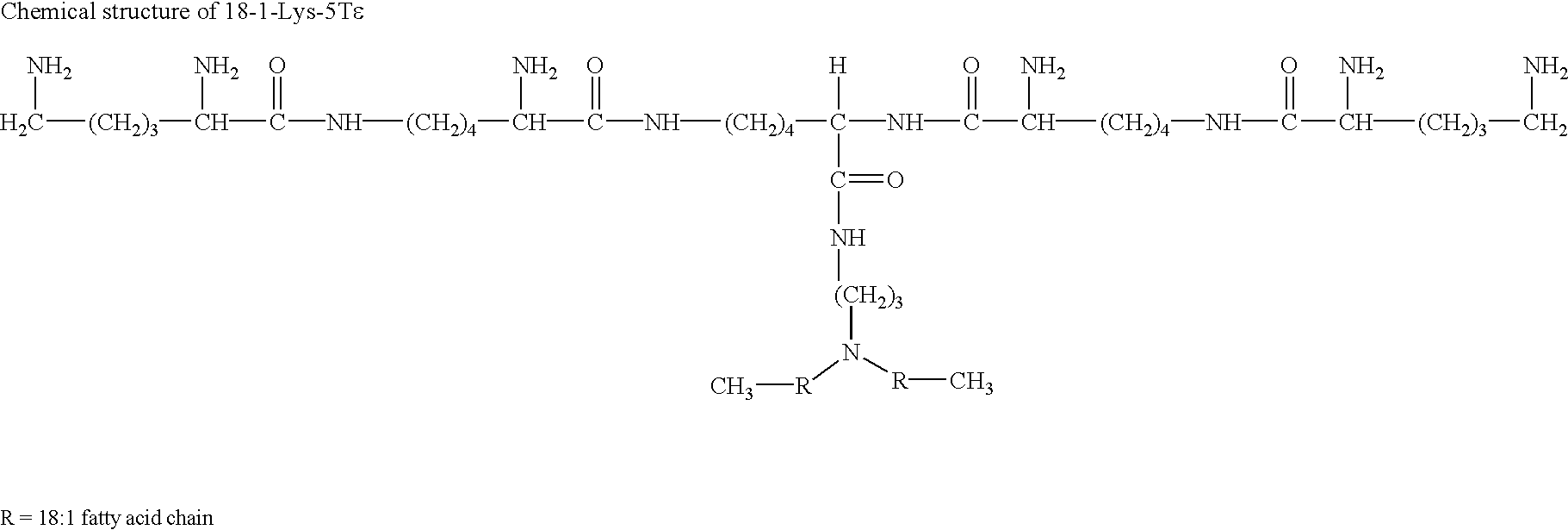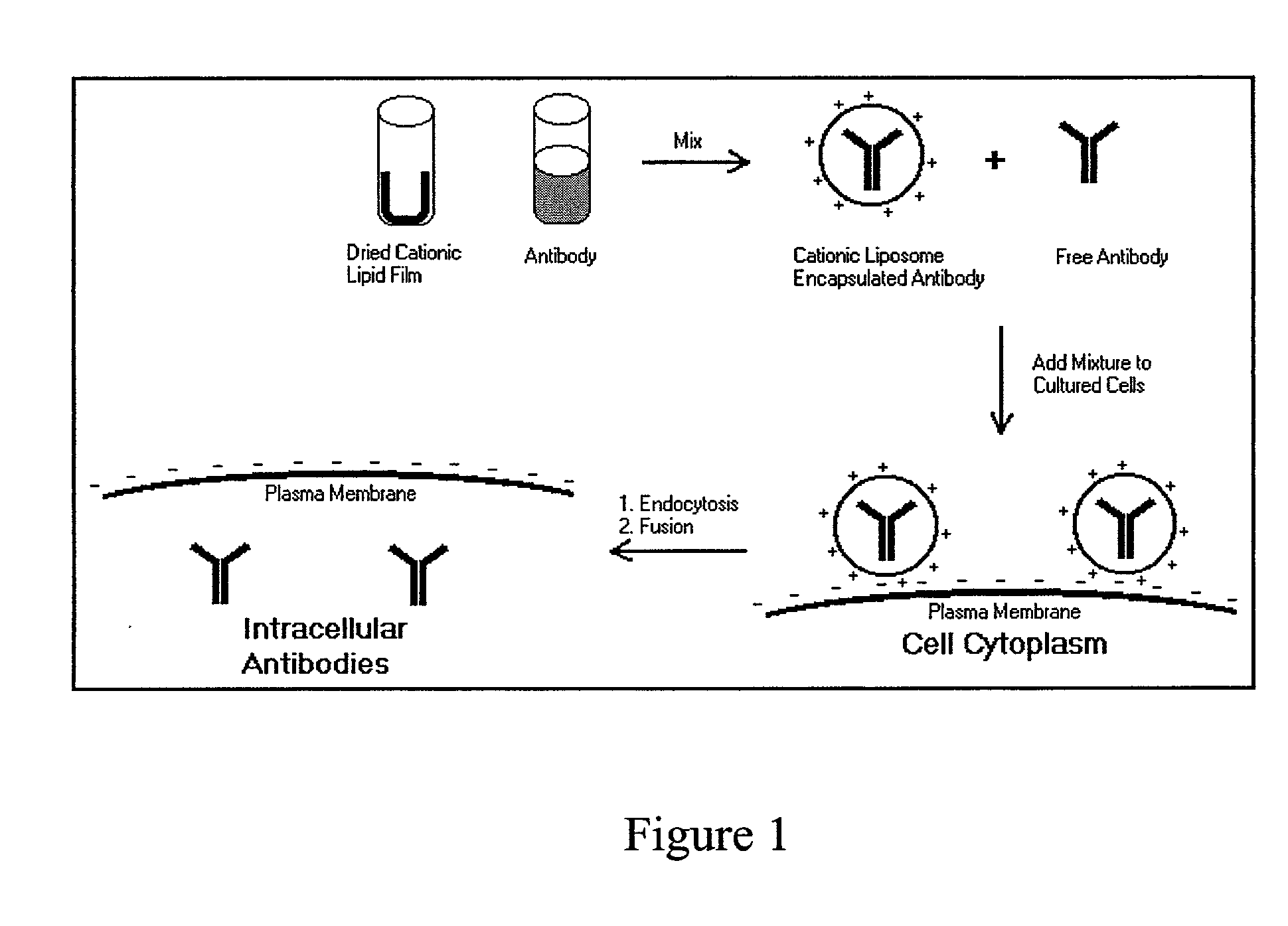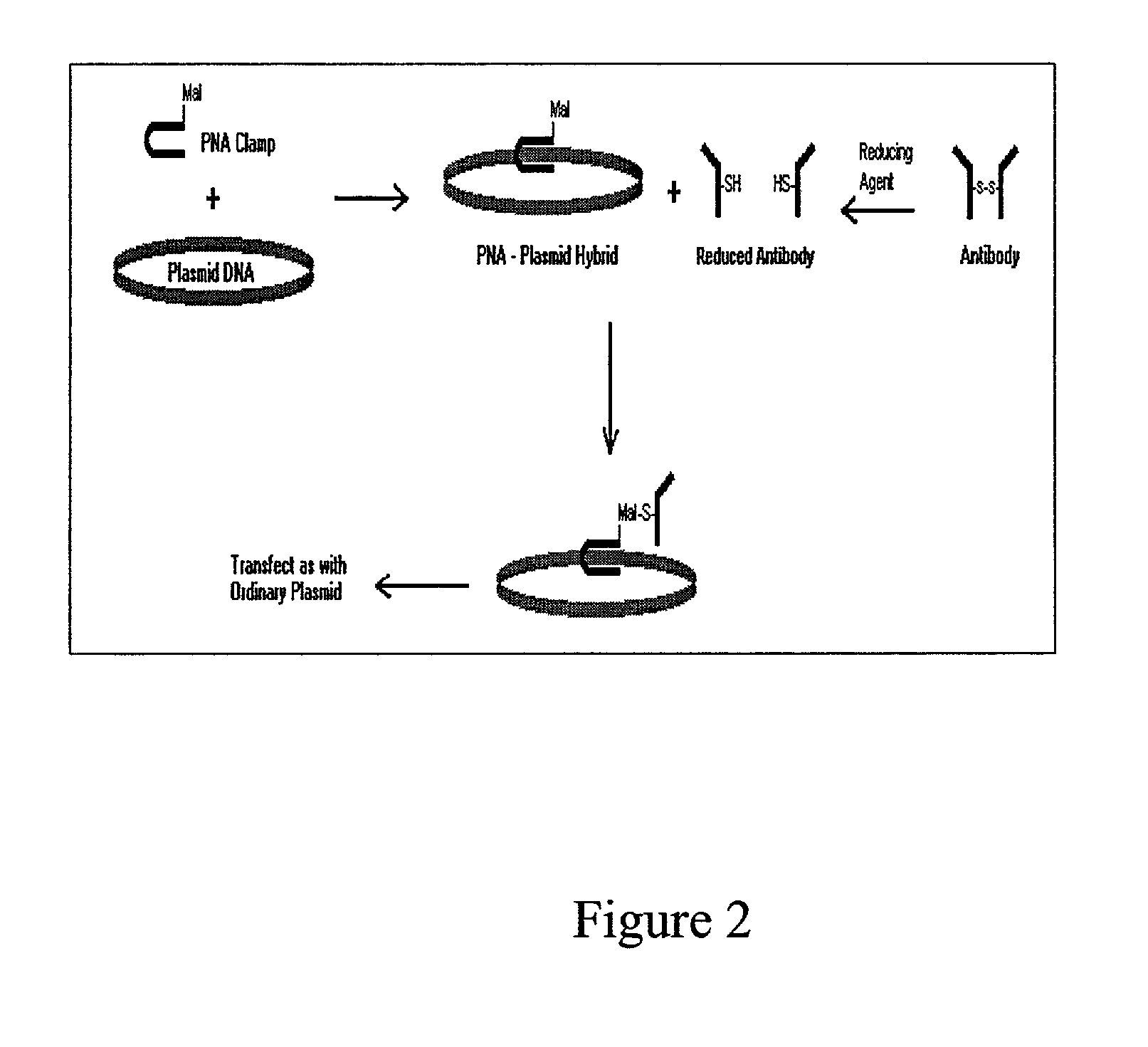Intracellular protein delivery compositions and methods of use
a technology of protein delivery composition and composition, applied in the field of intracellular protein delivery composition and method of use, can solve the problems of time-consuming and laborious methods, adversely affecting the biological activity of the protein, and distorting the protein conformation,
- Summary
- Abstract
- Description
- Claims
- Application Information
AI Technical Summary
Problems solved by technology
Method used
Image
Examples
example 1
Use of Reagent I for Intracellular Delivery of Proteins
[0092] For cationic lipid-mediated DNA delivery (i.e. lipofection), the lipids are usually suspended in water to form liposomes before they are added to the DNA. The positively charged liposomes interact spontaneously with negatively charged DNA and essentially 100% of the DNA forms cationic lipid-DNA complexes called lipoplexes. The positively charged lipoplex, which carries the entrapped DNA, interacts with negatively charged cell surfaces, and through a series of steps the entrapped DNA enters the cytoplasm and ultimately enters the nucleus where it can be transcribed.
[0093] Standard lipofection technology relies on the interaction between highly positively charged liposomes and negatively charged DNA. Since proteins do not share the same physical properties as DNA, this technology has not yet been directly applied to protein delivery. Because proteins do not have the same high negative charge density as DNA, lipoplex formati...
example 2
Intracellular Delivery of Streptavidin using Reagent II
[0101] Colloidal gold (10 nm diameter)-labeled streptavidin (Sigma, St. Louis, Mo.) was mixed with biotin-PNA labeled plasmid at 10:1 molar ratio excess and incubated for 1 hour at 37.degree. C. The mixture was then passed over a Sephacryl-500-HR column to remove the free streptavidin-gold and the gold labeled plasmid was transfected into COS 7 cells with the GenePORTER.TM. (Gene Therapy Systems, Inc., San Diego, Calif.) transfection reagent. The results showed that streptavidin-gold labeled plasmid can be transfected into cells with streptavidin-gold still attached. The intracellular plasmid in the transfected cells was revealed by transmission electron microscopy. The results also showed that streptavidin-gold can be delivered into cells by binding the streptavidin onto the plasmid. Streptavidin-gold-labeled plasmid DNA was seen in the extracellular space and in the cytoplasm. Gold particles were also found attached to the cel...
example 3
Intracellular Delivery of Proteins using Reagent III
[0105] An oligonucleotide obtained from a commercial supplier (GenBase, Inc.) containing a 5' terminal NH2 group and a 3' terminal Rhodamine moiety (5'-NH2-TGACTGTGAACGTTCGAGATGA-Rhodamine-3') was conjugated to goat IgG (Sigma) and was introduced into cells using a conventional cationic lipid transfection reagent. Two variations of the method were tested. In one, lipid formulation was first resuspended in hydration buffer to form liposomes and then antibody-oligonucleotide conjugate was added to the liposome formulation. This approach leads to the formation of lipoplexes. In another variation, antibody-oligonucleotide conjugate was directly added to the dried film of BioPORTER reagent. This approach leads to encapsulation of the protein-oligonucleotide conjugates as well as lipoplex formation. Either approach was found to be successful in the intracellular delivery of antibody-oligonucleotide conjugates.
[0106] Although the foregoin...
PUM
| Property | Measurement | Unit |
|---|---|---|
| temperature | aaaaa | aaaaa |
| concentration | aaaaa | aaaaa |
| concentration | aaaaa | aaaaa |
Abstract
Description
Claims
Application Information
 Login to View More
Login to View More - R&D
- Intellectual Property
- Life Sciences
- Materials
- Tech Scout
- Unparalleled Data Quality
- Higher Quality Content
- 60% Fewer Hallucinations
Browse by: Latest US Patents, China's latest patents, Technical Efficacy Thesaurus, Application Domain, Technology Topic, Popular Technical Reports.
© 2025 PatSnap. All rights reserved.Legal|Privacy policy|Modern Slavery Act Transparency Statement|Sitemap|About US| Contact US: help@patsnap.com



